Sensitive content
This site contains sensitive content that includes references to sexual violence.
By Victor Samuel, Program Manager / CSAM Analyst, Action Against Child Sexual Abuse Initiative (ACSAI)
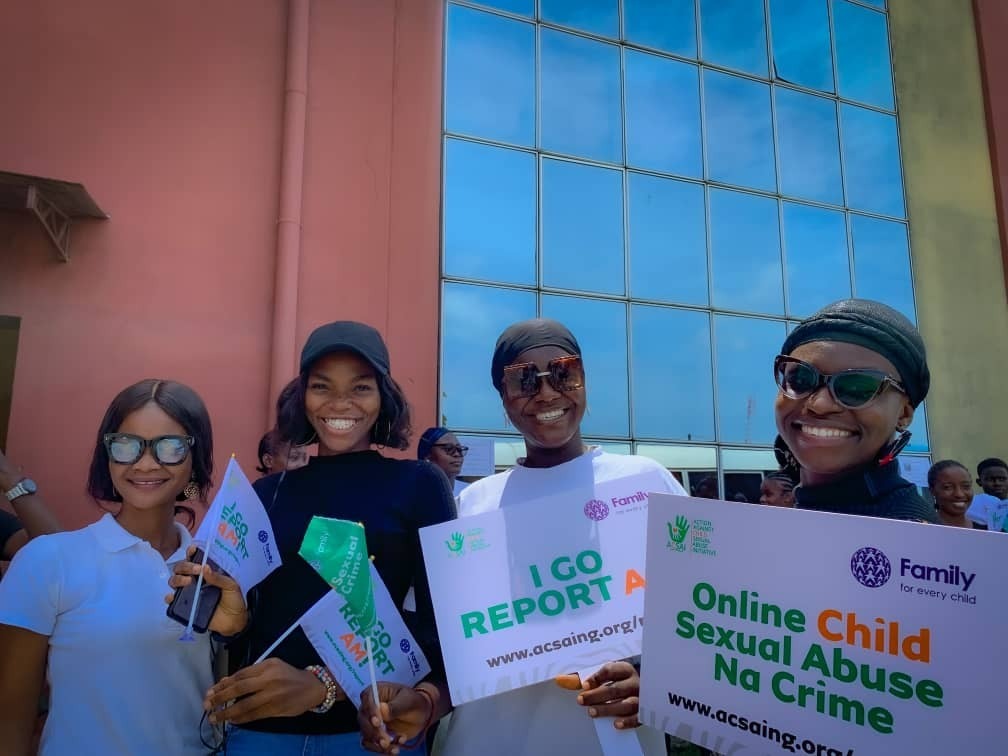
ACSAI is challenging misconceptions about online violence, breaking cultural barriers that silence victims, and creating safer digital spaces for children in Africa, by amplifying the voices of digital natives and survivors.
In Nigeria, societal discrimination against survivors of sexual abuse often stems from cultural norms that value family honor, silence around sexual topics, and victim-blaming.
Sexual violence is often shrouded in silence due to cultural taboos, and online-assisted crimes against children and young people face similar stigma.
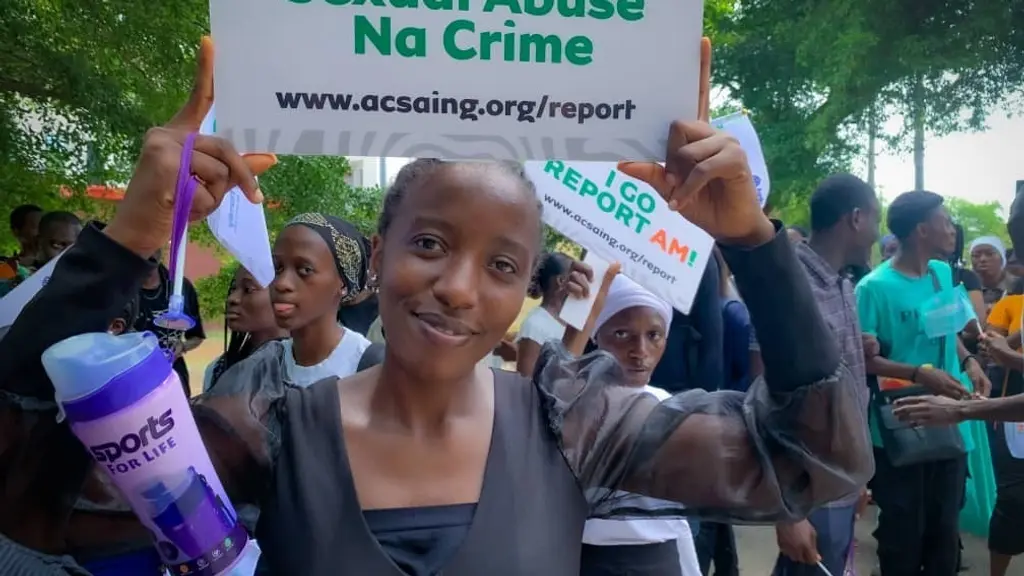
Girls and young women, who are disproportionately targeted by online violence, experience societal discrimination, making it even harder for them to speak out or seek help.
Survivors may be labelled as "wayward" or accused of seducing the abuser. Deep-rooted taboos make it difficult for victims to seek help. Many are forced into silence, leading to re-victimization, lack of justice, and prolonged trauma.
A 14-year-old girl we supported was discouraged by her guardians from reporting an adult male who groomed and sexually exploited her online, fearing community shame and “bringing disgrace” to the family. In another case, a girl’s parents refused to press charges against her abuser, a teacher, because of the stigma it would attract in their community. University-age girls are lured with fake modeling jobs or scholarships, only to be manipulated into sharing intimate content, which is later used to blackmail or humiliate them.
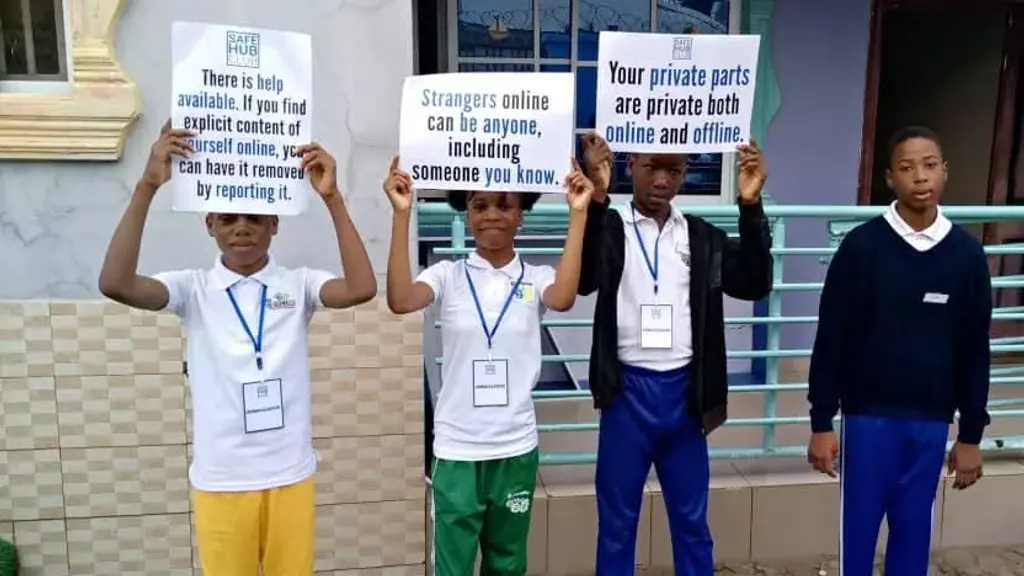
"Unfortunately, a widespread misconception exists that young people are merely users of technology, not direct victims of online crimes. This misunderstanding arises from a lack of awareness about the growing population of young internet users in Africa and the unique risks they face online."

Online child sexual exploitation and abuse of children, especially young girls, is on the rise. According to the Out of the Shadows Index 2022, Nigeria ranks 47th out of 60 countries, highlighting significant gaps in prevention, response, and support systems.
Young girls are most vulnerable to online exploitation due to societal power imbalances and limited access to digital literacy programs. They frequently experience grooming, sextortion and non-consensual sharing of intimate images via WhatsApp, Instagram, Telegram, TikTok, and Facebook.
An estimated 70% of children aged 6-12 have internet access in Nigeria, many without adequate safeguards or awareness of online dangers such as cyberbullying and online predators, creating an urgent need for digital safety advocacy and psychosocial support.
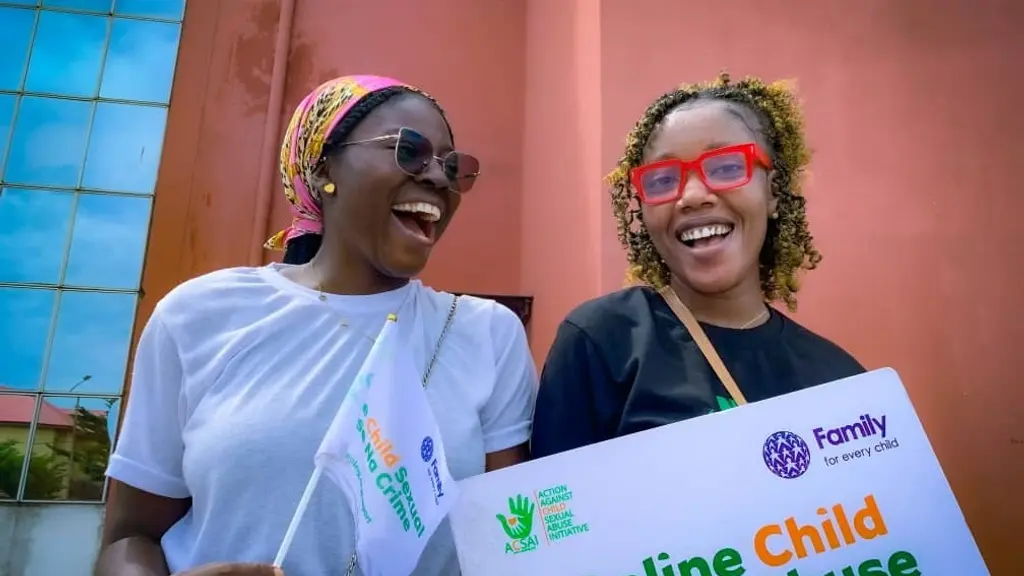
Young change makers use their own personal social media platforms to share relatable, anonymized stories, demystifying digital threats and empower young people to recognize, resist, and report abuse.
"Now we have a peer-led network of ambassadors. Through peer education sessions, school outreaches, and digital campaigns, they lead grassroots change. E-Changemakers was launched in response to the growing need to center their voices as digital natives, in developing solutions."
They teach others about:
The program’s success lies in its participatory approach, ensuring that young people are not just recipients of information but active contributors in shaping solutions. These young people co-create campaigns, design awareness tools, and advise on language, tone, and visuals that resonate with their peers. They also take part in review meetings and pilot trainings, shaping program delivery. During a recent digital literacy session, their feedback led to the integration of short skits and meme-based learning into the curriculum.
Additionally, E-Changemakers have played a crucial role in bridging the gap between survivors and support services by promoting awareness of ACSAI’s hotline. Their efforts have helped numerous victims remove leaked images and access the assistance they need*.
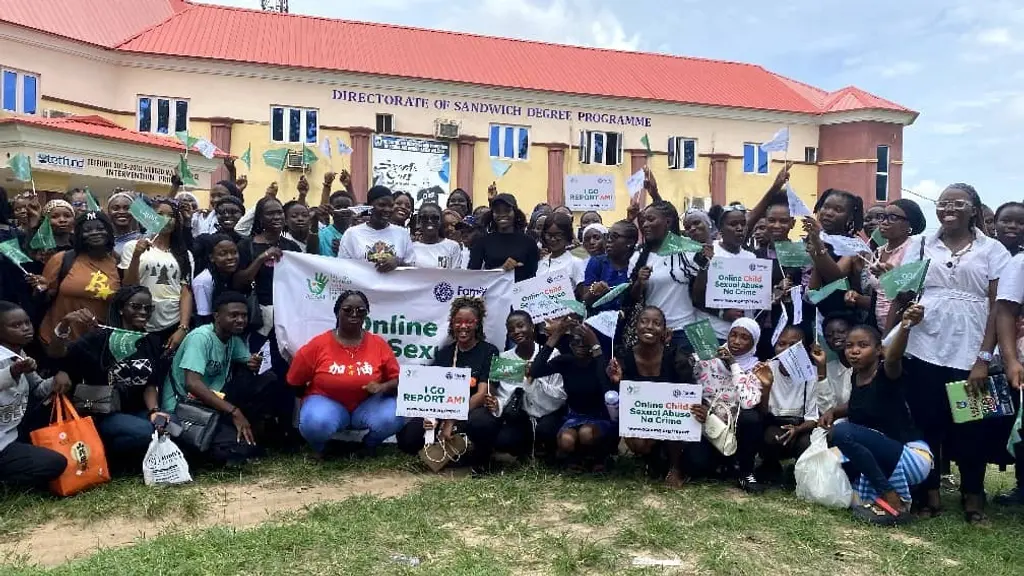
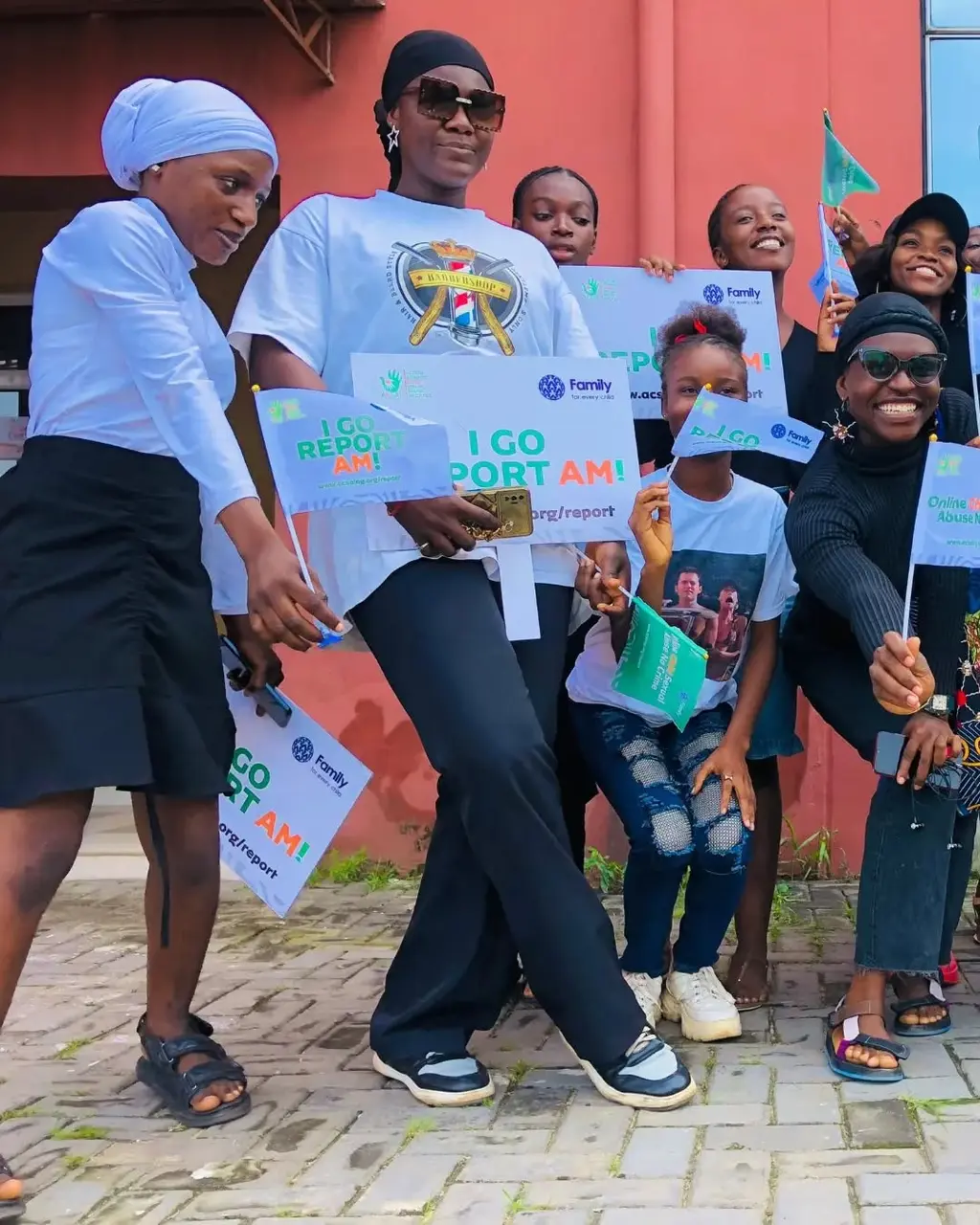

"Real-life impact includes a girl who, after a sextortion attempt, was supported by an E-Changemaker to report through our hotline. Within 48 hours, the image was removed, and she was connected to a counsellor"
Since its inception:
These young ambassadors play a critical role** in:
By working alongside young people and survivors, we have successfully co-created solutions with them. This approach incorporates their feedback at every stage of the process and emphasizes multi-sector collaboration.
ACSAI worked closely with their institutional partner, the National Agency for the Prohibition of Trafficking in Persons (NAPTIP), to ensure Favour was fully supported in a safe and trauma-informed manner.
In line with best practices for safeguarding survivors of sexual violence, Favour received comprehensive psychosocial support throughout the filming process. A professional counselor from NAPTIP was present and available to her before, during, and after filming, ensuring she had a trusted adult she could rely on at every stage. This support structure allowed her to express her emotions safely, process any distress that may have emerged, and pause filming whenever she felt overwhelmed.
ACSAI worked with NAPTIP to ensure Favour’s rights and dignity were protected, maintaining consistent communication and monitoring to ensure she received the assistance she needed.
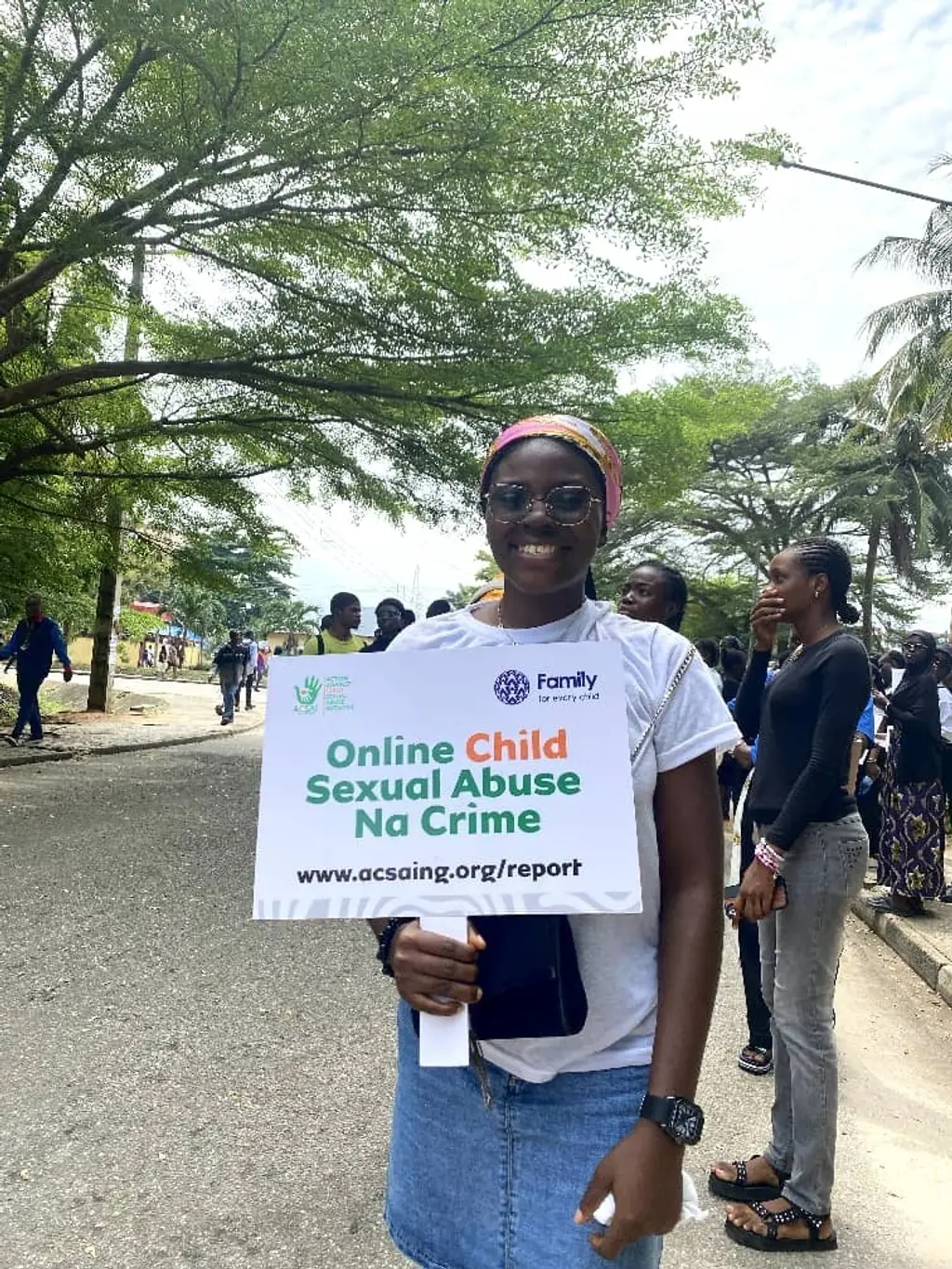
"We have transformed the narrative: young people are not just spectators but active participants in creating a safer digital world. It has also strengthened trust and collaboration with the communities we serve."
The journey is far from over, but with initiatives like the E-Changemakers Program and projects like Beyond the Screen, we’re paving the way for a safer internet and a brighter future for young people in Nigeria and beyond.
* When a report is been made to the ACSAI hotline (www.acsaing.org/report), ACSAI's trained Internet Content Analyst verifies and classifies the content as CSAM or IIA (intimate image abuse). If confirmed as CSAM, the content is escalated using INHOPE’s secure global platform, which works directly with tech companies and law enforcement globally. Within hours, the image is flagged, removed, and the URL is disabled across multiple platforms. The survivor is then linked to trauma-informed psychosocial support, legal aid (if desired), and community protection services.This process protects victims, removes revictimizing content, and restores dignity.
** Educating peers on how to report abuse: E-Changemakers run sessions teaching how to use www.acsaing.org/report (ACSAI's Hotline) and explain the importance of evidence preservation when reporting abuse. Facilitating removal of CSAM and intimate images: When a case is reported via the ACSAI hotline, it is escalated through INHOPE’s global platform, which facilitates the swift takedown of CSAM from the internet. E-Changemakers play a role in encouraging victims to report and helping them through the process. Advocating for a safer digital environment: They engage in school forums, interviews, dialogues, and online campaigns urging policy change and platform accountability. Equipping others: They distribute educational materials, run peer-led training, that promote online safety.
